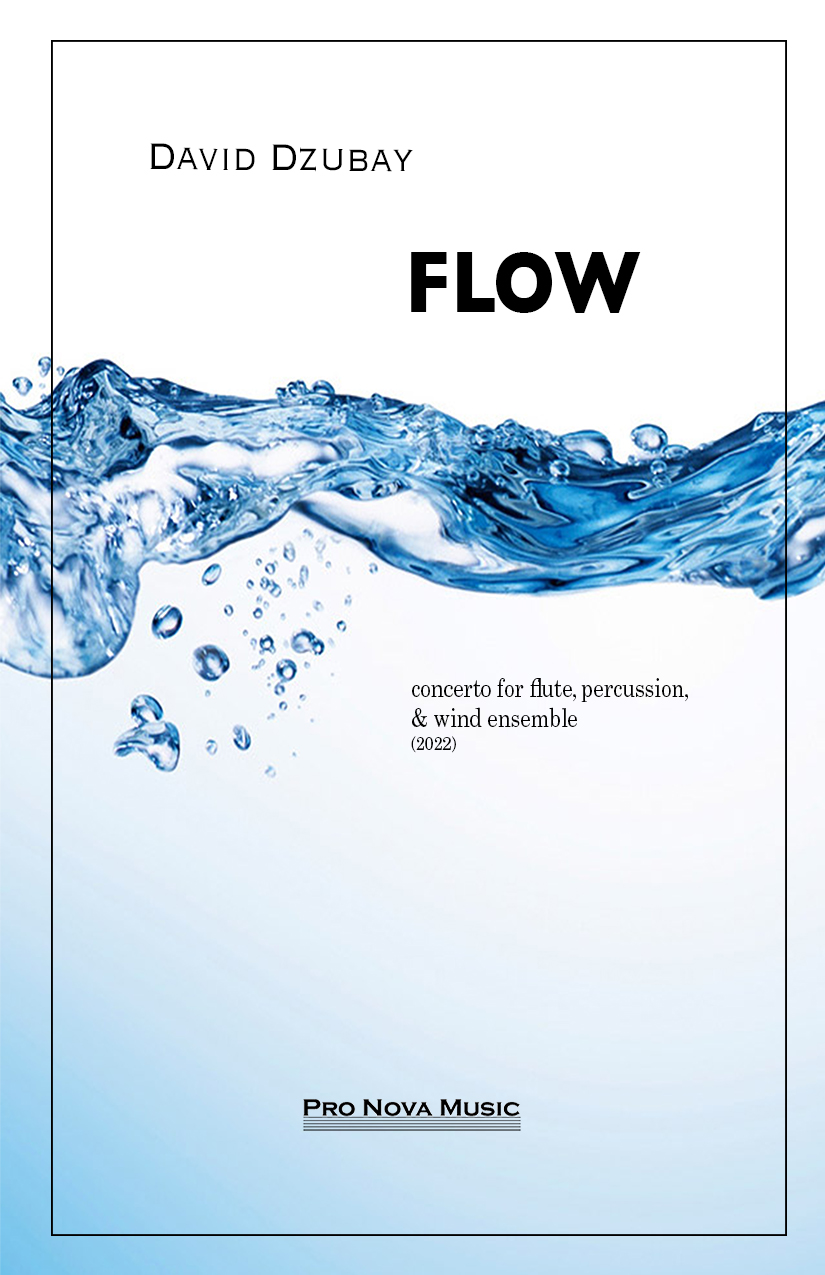FLOW concerto for flute, percussion & wind ensemble
(2022)
- Drips & Drops
- Floating City of Lake Texcoco –
- Aqueduct Run
instrumentation:
Piccolo, Flute 1-2, Oboe 1-2, Clarinet 1-3, Bass Clarinet, Bassoon, Contrabassoon, Trumpet 1-3, Horn 1-4,Trombone 1-2, Euphonium, Tuba, Timpani, Percussion 1-3, Harp, Piano, Solo Flute, Solo percussion (bongos and congas)
duration: 18 minutes
Perusal Score:
premiere of the original version for orchestra:
Orquesta Filarmónica de la Ciudad de México, November 9-10, 2019
Iván del Prado, conductor; Alejandro Escuer, flute
Program Note:
Composed for and dedicated to my good friend and long-time professional colleague, flautist Alejandro Escuer, FLOW is a concerto for flute, percussion and wind ensemble. One can imagine many things “flowing”: air, creating the flute’s sound; water traveling from here to there around this whole planet – giving us all life and a shared elemental experience; people, moving to and fro; and of course, music, especially music passing ideas back and forth among musicians or taking one or more motives on a journey across a piece of music lasting some twenty minutes, as in FLOW. Each of these examples of flow also involve transformation, in a process that might be circular, or perhaps never-ending.
While composing this concerto, I thought much about the flow of water, and even specifically, about the flow and history of water in Mexico City, which of course was built upon a lake and continues to have challenges with water. Supplying fresh water to the population is not easy, and while extracting twice the amount of water as that replenishing the underground aquifers, the city continues to sink, such that the zócalo is now below the level of Lake Texcoco, which was the lowest point in the Valley of México.
The first movement is called “Drips & Drops.” Over the course of about six minutes the music gradually transforms from the opening single short note played by the flute into short motives and then longer lines and gestures; many of these descend in the way of water following gravity, not unlike the Aztec’s aqueducts. The slow central movement contemplates the shifting ground beneath the city afloat on the aquifers below lake Texcoco. Blocks of sound shift in relation to each other throughout, and the climax presents a large imposing structure arising and then sinking. The closing movement imagines water traveling the paths of the old aqueducts but is also inspired by the bustling activity and flow of people around the city.
For any theorists in the audience: some key melodic shapes are drawn from letters in Alejandro Escuer’s name: AAEADD for his first name (L for the pitch A, or “La” in solfege; R for pitch D, or “Re”; I skipped over j and o). Escuer translates as EBCCED.
Premiere of the original version for orchestra: November 9 & 10, 2019 Alejandro Escuer, solo fute; Iván Del Prado, conductor Orquesta Filarmónica de la Ciudad de México
| flute part: | percussion part: |


